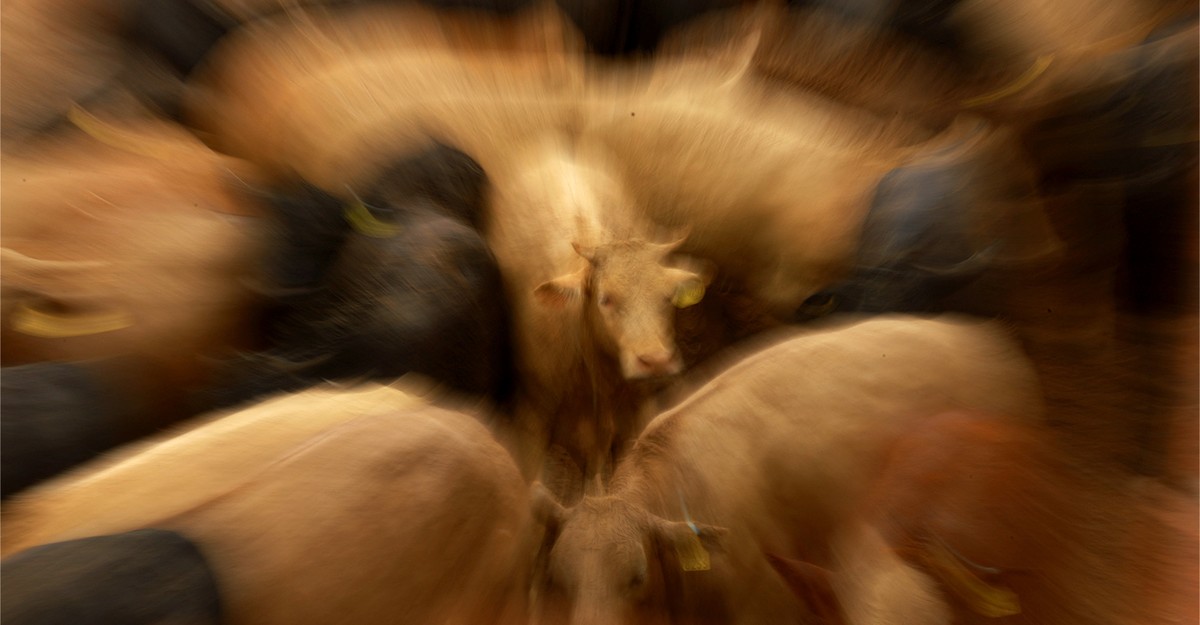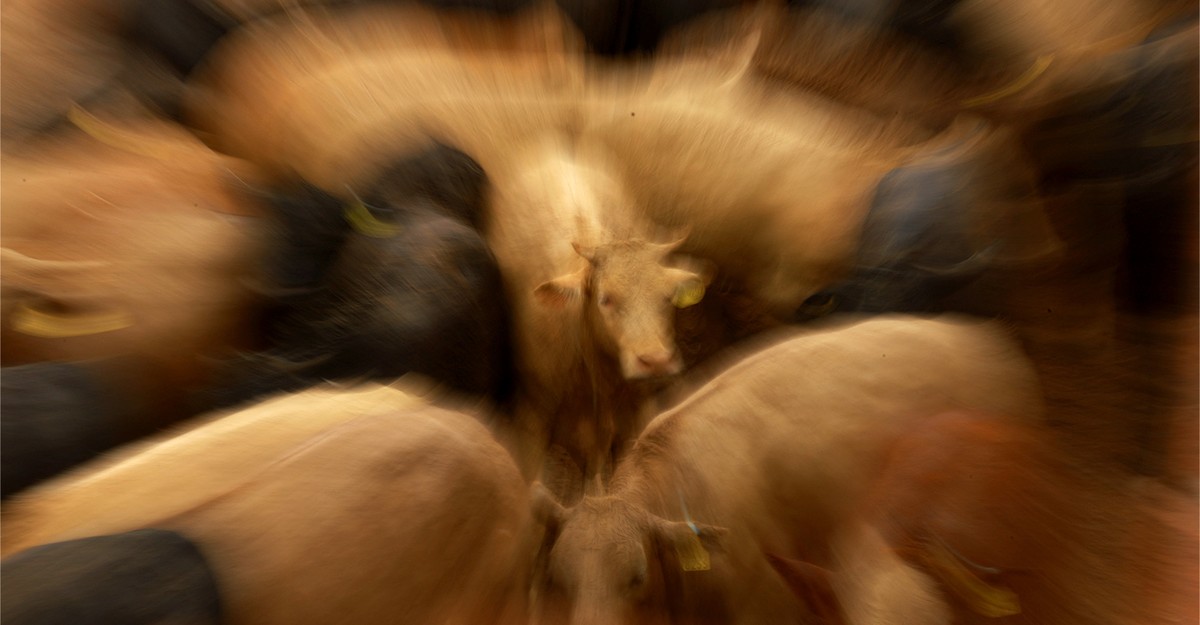The Return Of The Screwworm Fly: A Growing Threat To Livestock

Welcome to your ultimate source for breaking news, trending updates, and in-depth stories from around the world. Whether it's politics, technology, entertainment, sports, or lifestyle, we bring you real-time updates that keep you informed and ahead of the curve.
Our team works tirelessly to ensure you never miss a moment. From the latest developments in global events to the most talked-about topics on social media, our news platform is designed to deliver accurate and timely information, all in one place.
Stay in the know and join thousands of readers who trust us for reliable, up-to-date content. Explore our expertly curated articles and dive deeper into the stories that matter to you. Visit Best Website now and be part of the conversation. Don't miss out on the headlines that shape our world!
Table of Contents
The Return of the Screwworm Fly: A Growing Threat to Livestock
The dreaded screwworm fly, Cochliomyia hominivorax, is making a comeback, posing a significant and growing threat to livestock across the Americas. Once eradicated from the United States and parts of Central America through a highly successful Sterile Insect Technique (SIT) program, this parasitic fly is now causing increasing concern among farmers and agricultural officials. This resurgence highlights the vulnerability of even seemingly conquered agricultural pests and the ongoing need for vigilant monitoring and proactive control measures.
Understanding the Threat: More Than Just a Nuisance
The screwworm fly's larvae are obligate parasites, meaning they require a living host to survive and develop. Female flies lay their eggs in wounds, open sores, or even natural orifices of livestock, including cattle, sheep, goats, and pigs. Once hatched, the maggots burrow into the flesh, feeding on living tissue and causing severe myiasis – a parasitic infestation characterized by extensive tissue damage, pain, and potential death for the host animal. This not only leads to significant animal welfare concerns but also results in substantial economic losses for farmers due to decreased productivity, veterinary costs, and animal mortality.
The Resurgence: Factors Contributing to the Comeback
Several factors contribute to the resurgence of the screwworm fly:
- Breakdown of Control Programs: While the SIT program was incredibly effective, maintaining it requires continuous effort and funding. Budget cuts and logistical challenges in remote areas can lead to lapses in control, allowing the fly population to rebound.
- Climate Change: Changes in temperature and rainfall patterns may create more favorable breeding conditions for the screwworm fly, expanding its geographical range and increasing its reproductive success.
- Movement of Animals: The illegal movement of livestock across borders can unintentionally transport infected animals, facilitating the spread of screwworm infestations to new areas.
- Resistance to Insecticides: While not yet widespread, the potential for screwworm flies to develop resistance to insecticides used in control efforts poses a significant long-term threat.
Combating the Threat: A Multi-pronged Approach
Controlling the resurgence of the screwworm fly requires a comprehensive and collaborative approach involving:
- Strengthening SIT Programs: Reinvesting in and improving the Sterile Insect Technique is crucial. This involves optimizing the production and release of sterile male flies to disrupt the breeding cycle of the wild population.
- Improved Surveillance and Early Detection: Early detection of infestations is vital for effective control. This requires enhanced surveillance systems, including regular inspections of livestock and prompt reporting of suspected cases.
- Stricter Biosecurity Measures: Implementing and enforcing strict biosecurity measures, including regulations on livestock movement and border controls, are essential to prevent the spread of infestations.
- Research and Development: Ongoing research is critical to develop new and improved control strategies, including exploring alternative insecticides and investigating the potential of genetic modification techniques.
The Economic Impact and Call to Action
The economic impact of screwworm infestations is substantial, affecting not only individual farmers but also national economies. The cost of treatment, lost productivity, and animal mortality can cripple agricultural sectors. Therefore, coordinated action from governments, agricultural organizations, and researchers is essential to prevent a widespread epidemic and mitigate the severe economic consequences. Increased funding for research, improved surveillance, and strengthened control programs are crucial steps to protect livestock and ensure the long-term sustainability of agricultural industries. Further research into the specific factors driving this resurgence is also vital to develop more effective long-term strategies. This is not just an agricultural problem; it's a significant economic and animal welfare issue demanding immediate attention.

Thank you for visiting our website, your trusted source for the latest updates and in-depth coverage on The Return Of The Screwworm Fly: A Growing Threat To Livestock. We're committed to keeping you informed with timely and accurate information to meet your curiosity and needs.
If you have any questions, suggestions, or feedback, we'd love to hear from you. Your insights are valuable to us and help us improve to serve you better. Feel free to reach out through our contact page.
Don't forget to bookmark our website and check back regularly for the latest headlines and trending topics. See you next time, and thank you for being part of our growing community!
Featured Posts
-
 New Georgia Drivers Services Text Scam Targeting Residents
May 29, 2025
New Georgia Drivers Services Text Scam Targeting Residents
May 29, 2025 -
 Crash Involving Thames Valley Police Officer Leads To Mans Arrest
May 29, 2025
Crash Involving Thames Valley Police Officer Leads To Mans Arrest
May 29, 2025 -
 Call Handler Resigns From Met Police Over Controversial Reinstatement Decision
May 29, 2025
Call Handler Resigns From Met Police Over Controversial Reinstatement Decision
May 29, 2025 -
 Agricultural Impact The Threat Of Screwworm Infestation To Livestock
May 29, 2025
Agricultural Impact The Threat Of Screwworm Infestation To Livestock
May 29, 2025 -
 Roland Garros Djokovic Gauff Sinner And Draper In Action Live Scores And Highlights
May 29, 2025
Roland Garros Djokovic Gauff Sinner And Draper In Action Live Scores And Highlights
May 29, 2025
Latest Posts
-
 Tsmc Q2 Profit Jumps 61 Exceeding Expectations Amidst Robust Ai Chip Demand
Jul 17, 2025
Tsmc Q2 Profit Jumps 61 Exceeding Expectations Amidst Robust Ai Chip Demand
Jul 17, 2025 -
 Nvidias Ai Chip Sales To China A Reversal Of Us Export Controls
Jul 17, 2025
Nvidias Ai Chip Sales To China A Reversal Of Us Export Controls
Jul 17, 2025 -
 Love Island Usas Amaya And Bryan Post Show Relationship Update
Jul 17, 2025
Love Island Usas Amaya And Bryan Post Show Relationship Update
Jul 17, 2025 -
 Ynw Melly Double Murder Case Retrial Set For September Following Mistrial
Jul 17, 2025
Ynw Melly Double Murder Case Retrial Set For September Following Mistrial
Jul 17, 2025 -
 De Chambeau Explains Why Public Courses Present Unexpected Challenges
Jul 17, 2025
De Chambeau Explains Why Public Courses Present Unexpected Challenges
Jul 17, 2025
